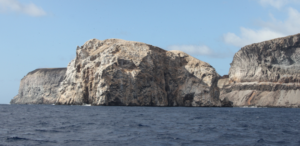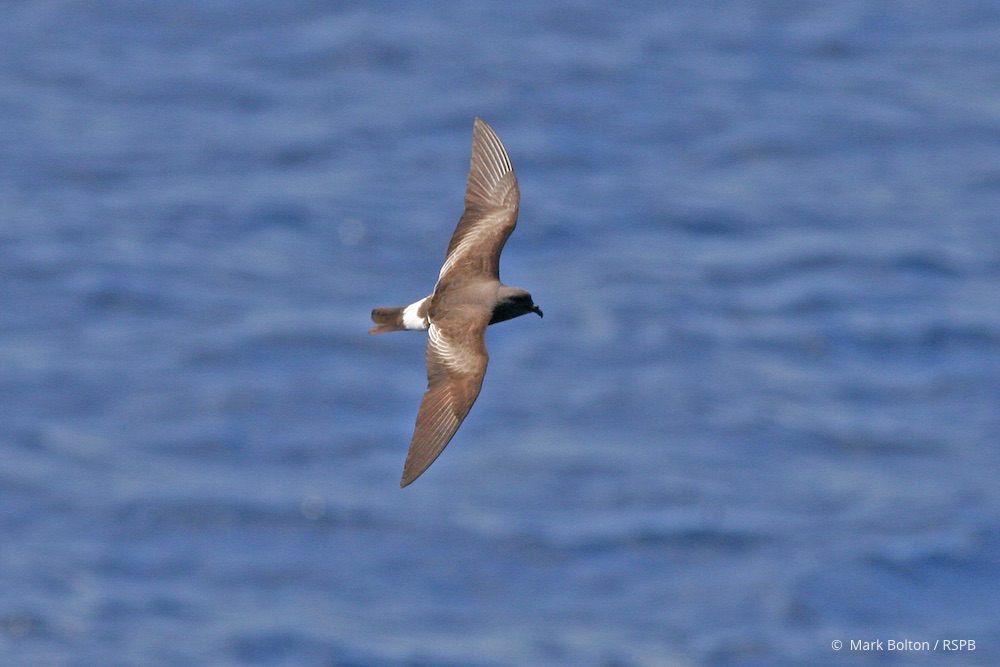First published on the RSPB community blog
LINKED PAPER
Cryptic species and independent origins of allochronic populations within a seabird species complex (Hydrobates spp.). Taylor, R.S., Bolton, M., Beard, A. Birt, T., Deane, Raine, A., González-Solís, J., Laughed, S.C., & Friesen, V.L. 2019. Molecular Phylogenetics and Evolution 139:106552.
DOI: 10.1016/j.ympev.2019.106552. VIEW
“What is a species?” is undeniably one of the most complex questions in biology. As humans are a visual species, we tend to name other species based on the way they look – or their morphology. However, sometimes animals diverge into different species without changing their morphology, and so we mistakenly categorize multiple species as one, known as cryptic species. This is the case for band-rumped storm-petrels (Hydrobates spp.). Using DNA sequencing, we uncovered multiple, as yet unrecognised, species.
Band-rumped Storm-petrels breeding distribution
Band-rumped Storm-petrels Hydropbates castro (also known as Madeiran Storm-petrels) are small, nocturnal seabirds that have their nesting colonies on remote archipelagos in the tropics and sub-tropics. As they are nocturnal, and rely on using vocalisations to attract mates, they may not diverge in their morphology even though they diverge into different species. Many seabirds go back to breed in the same location where they were reared, which can reduce mixing and gene flow between populations, and so may also facilitate divergence.
Band-rumped Storm-petrels are also interesting because of the timing of their breeding seasons (breeding phenology). In some breeding colonies, in Japan, Hawaii, Vila Island in the Azores, Berlengas, and the Canary Islands, these birds have one breeding season per year, which is the norm for birds. However, in some breeding colonies there are two breeding seasons, one in the hot season and one in the cool season, known as allochronic populations. This is the case in the Galapagos, Praia and Baixo Islands in the Azores, Desertas, Selvagem, St Helena Island and Ascension Island. In contrast, there are birds breeding all year-round in Cape Verde.

Boatswainbird Island off Ascension Island is a good example of site for a Band-rumped Storm-petrel colony. All the birds from Ascension Island breed here, make sampling the birds challenging!
© Rebecca Taylor
Earlier work hinted that these breeding colonies, different in space and in time, may not all be the same species. The hot season breeders in the Azores were found to be genetically distinct and to have slight differences in morphology and vocalisations from the cool season breeders also found in the Azores. As such, they were named as a new species, Monteiro’s Storm-petrel (Hydrobates monteiroi). The birds in Cape Verde were also named as a different species from all other locations based on findings of genetic uniqueness, and vocal differences and are now the Cape Verde Storm-petrel (Hydrobates jabejabe). However, all of the other colonies are still listed as one species. This has serious implications for their conservation, as they are currently listed as ‘Least Concern’ under the International Union for the Conservation of Nature (IUCN). However, if these birds represent multiple cryptic species, listing them as Least Concern may be an underestimate of their threat level.
Uncovering cryptic diversity
We decided to sequence the DNA of birds from all colonies, including the temporal populations, to investigate cryptic diversity in these birds. Recent developments in DNA sequencing technology mean that we are able to sequence thousands of genetic markers from across the genome and get a reliable idea of how the populations relate to one another, and how different they are from one another.

A Band-rumped Storm-petrel from Ascension Island in June being sampled before being set free.
© Rebecca Taylor
We found seven major groups when analysing the DNA, representing seven very genetically distinct populations and likely different species. The Cape Verde birds and the Azores hot season breeders represent two of those, agreeing with earlier work. In addition, birds from the Galapagos were a unique group, as were birds from Hawaii, birds from Japan, the other birds from the North Atlantic (Azores cool season breeders, Desertas, Selvagem, Berlengas, and the Canary Islands), and the birds from the South Atlantic (St Helena and Ascension Islands). This means that their taxonomy and threat status almost certainly needs to be revised.
When looking at the temporal populations found in the same locations, the patterns were interesting. They were at different levels of divergence, from completely unique from one another in the Azores, to slightly differentiated as on Selvagem, to not differentiated as on Ascension and St Helena Islands. It could be that they are at different stages of divergence because some of the temporal populations arose more recently. It could also be that birds in the South Atlantic don’t necessarily breed in the same season which they were reared but can change their breeding season, mixing the populations. Further work will be needed to figure out which of these is true.
Moving forward, our work highlights the need to investigate cryptic diversity, and new DNA sequencing technologies will be a great help. It is also interesting that there are no obvious geographical barriers separating the populations which are becoming distinct – seabirds can fly long distances over the ocean and so could the colonies on different archipelagos could interbreed with one another. Non-geographic barriers, such as breeding time, going back to breed where they were reared, and differences in feeding behaviour, need to be further investigated in storm-petrels and other birds to see how often they can drive new species to form.
Image credits
Featured image:Band-rumped Storm-petrel, St Helena Hydropbates castro © Mark Bolton / RSPB




